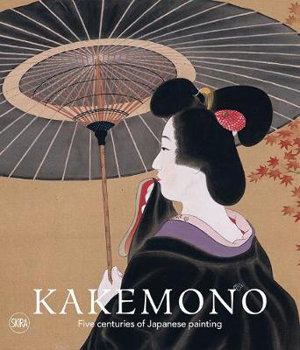
PublishedSkira Editore S.P.A, April 2021 |
ISBN9788857243795 |
FormatSoftcover, 192 pages |
Dimensions28cm × 24cm |
A comprehensive survey of the art of the kakemono, classic Japanese paintings on vertical scrolls.
Once displayed for the tea ceremony and in the alcove (tokonoma) of traditional houses, the kakemono or kakejiku is a 'painted hanging scroll,' which, in the variety of its themes, describes changing beauty and the flow of time. Subjects are in fact selected to satisfy the taste of the visitors, and harmony with seasons and events. As with Japanese writing, it should be read from right to left.
Verisimilitude being of subordinate importance, what really matters is to convey 'the power of the brush.' As long as the spirit and the essence of the image can be appreciated, any painting can be enjoyed as a journey into the artist's mind.
Edited by Matthi Forrer and realized in collaboration with the Fondazione culture e musei of Lugano and the Fondazione Torino Musei, the book presents a selection of 120 kakemono from the important private Perino collection, offering a unique opportunity to discover Japanese painting between the 16th and 19th centuries.Most of the subjects are drawn from nature (flowers, birds and fish), painted realistically in extraordinarily precise detail. They include works of rare beauty by artists such as Maruyama Okyo (1733-1795), who worked in the imperial court and founded Maruyama-Shijo, one of the most prestigious naturalist schools of the period, Kishi Ganku (1749/56-1838/39), famous for his paintings of tigers, and Kusumi Morikage (1620-1690), painter of the Edo period whose works reflect his sympathy for farmers and the poor.

